Advanced Orthopedic Treatments
These advanced orthopedic treatments are specifically designed to address a comprehensive range of musculoskeletal issues, providing effective solutions for joint pain, cartilage damage, ligament injuries, and other complex orthopedic conditions. By utilizing state-of-the-art techniques and cutting-edge technology, these treatments aim to restore mobility, reduce discomfort, and improve overall functionality. Whether it’s managing chronic pain, treating sports injuries, or performing joint replacements, the goal is to deliver personalized care that enhances patient outcomes and significantly improves their quality of life.
Trauma Surgery
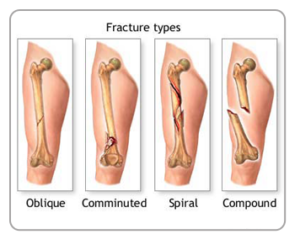 Advanced orthopedic treatments for trauma surgery focus on urgent care for severe injuries, including various fracture types such as simple, compound, comminuted, greenstick, stress, and pathological fractures. Our expert team provides emergency surgical treatment and rehabilitation, utilizing advanced orthopedic treatments to ensure a full recovery and restore mobility.
Advanced orthopedic treatments for trauma surgery focus on urgent care for severe injuries, including various fracture types such as simple, compound, comminuted, greenstick, stress, and pathological fractures. Our expert team provides emergency surgical treatment and rehabilitation, utilizing advanced orthopedic treatments to ensure a full recovery and restore mobility.
Total Hip Replacement
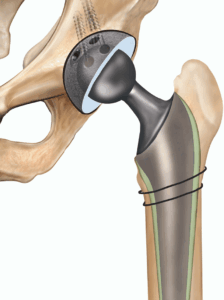 In this surgery, the damaged or worn-out hip joint is removed and replaced with an artificial implant. This procedure is typically recommended for patients with severe arthritis or hip damage that impacts mobility and quality of life. The replacement joint is designed to mimic the natural movement of the hip.
In this surgery, the damaged or worn-out hip joint is removed and replaced with an artificial implant. This procedure is typically recommended for patients with severe arthritis or hip damage that impacts mobility and quality of life. The replacement joint is designed to mimic the natural movement of the hip.
Total Knee Replacement
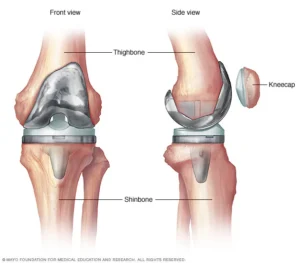
This surgery involves removing the damaged surfaces of the knee joint and replacing them with metal and plastic components. It is often performed for individuals with advanced osteoarthritis or severe knee damage, aiming to relieve pain and restore function.
Carpal Tunnel Release
 This procedure addresses carpal tunnel syndrome, a condition caused by pressure on the median nerve in the wrist. During the surgery, the transverse carpal ligament is cut to relieve pressure on the nerve, which can reduce symptoms like pain, numbness, and tingling in the hand and fingers.
This procedure addresses carpal tunnel syndrome, a condition caused by pressure on the median nerve in the wrist. During the surgery, the transverse carpal ligament is cut to relieve pressure on the nerve, which can reduce symptoms like pain, numbness, and tingling in the hand and fingers.
Shoulder Replacement
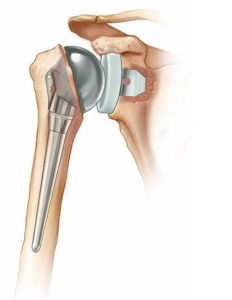
This involves replacing a damaged or arthritic shoulder joint with an artificial implant. The surgery may involve a total shoulder replacement or a partial replacement, depending on the extent of the damage. It aims to relieve pain and restore range of motion.
Diagnostic Arthroscopy
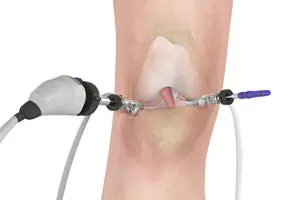 This minimally invasive procedure involves inserting a small camera (arthroscope) into the joint through a tiny incision. It allows for direct visualization of the joint structures, helping to diagnose issues such as cartilage damage, ligament tears, or inflammation, and guide subsequent treatment.
This minimally invasive procedure involves inserting a small camera (arthroscope) into the joint through a tiny incision. It allows for direct visualization of the joint structures, helping to diagnose issues such as cartilage damage, ligament tears, or inflammation, and guide subsequent treatment.
Hip Arthroscopy
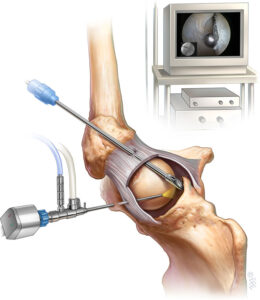
This minimally invasive procedure uses an arthroscope to examine and treat issues within the hip joint. It is useful for diagnosing and addressing problems like labral tears, cartilage damage, and impingement with small incisions and specialized instruments.
Ankle Arthroscopy

Ankle arthroscopy involves inserting a camera and small surgical tools into the ankle joint to diagnose and treat conditions such as ligament tears, cartilage damage, or inflammation. This minimally invasive technique offers a quicker recovery compared to open surgery.
Knee Arthroscopy
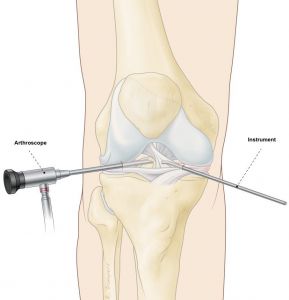
This procedure involves the use of an arthroscope to view and treat issues within the knee joint. It can be used to diagnose and repair damaged cartilage, ligaments, and menisci with minimal incisions, leading to faster recovery and less postoperative pain.
Shoulder Arthroscopy
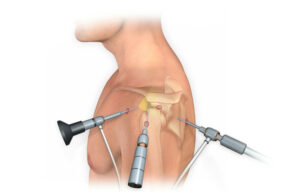 Shoulder arthroscopy is a minimally invasive technique that uses a small camera and instruments to examine and repair issues in the shoulder joint. This advanced orthopedic treatment is often used for conditions like rotator cuff tears, labral tears, and shoulder impingement.
Shoulder arthroscopy is a minimally invasive technique that uses a small camera and instruments to examine and repair issues in the shoulder joint. This advanced orthopedic treatment is often used for conditions like rotator cuff tears, labral tears, and shoulder impingement.
Meniscus Repair

This surgery focuses on repairing torn meniscus cartilage in the knee. The meniscus acts as a cushion between the thighbone and shinbone, and repairing tears can relieve pain, restore knee function, and prevent further joint damage through advanced orthopedic treatments.
PCL Reconstruction
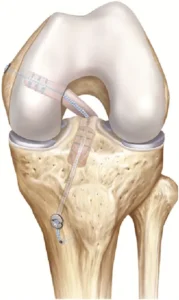 This procedure involves reconstructing the posterior cruciate ligament (PCL) in the knee, which is crucial for stabilizing the joint. The surgery typically uses a graft from the patient’s own tissue or a donor to replace the damaged ligament, improving knee stability and function.
This procedure involves reconstructing the posterior cruciate ligament (PCL) in the knee, which is crucial for stabilizing the joint. The surgery typically uses a graft from the patient’s own tissue or a donor to replace the damaged ligament, improving knee stability and function.